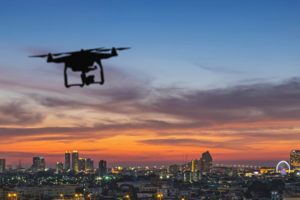 Extracting forensic evidence from a rogue drone just got easier.
Extracting forensic evidence from a rogue drone just got easier.
On Thursday, Swedish mobile forensics company MSAB announced a partnership with URSA to expand the business of drone forensics – collecting and analyzing telemetry and data from a captured drone engaged in unauthorized activities.
URSA’s Idetic Unmanned tools provides – according to a press release “the most accurate understanding of drone telemetry data and metadata to support academic, law enforcement, insurance, and intelligence investigations in the rapidly evolving unmanned vehicle and robotics ecosystem.”
MSAB’s Mobile Forensic Ecosystem empowers police to rapidly gather data from mobile devices, including drones. Two keystone MSAB products — XRY and XAMN — enable users to extract data from mobile devices and serves as an analytical tool for visualizing, searching and analyzing that data.
XRY now supports extraction of data from a number of popular drone models, allowing investigators to see flight path data and other data that can assist their investigations and enforcement activities involving illegal drones.
“The use of drones for illegal activities has grown tremendously over the last several years,” said Joel Bollö, MSAB CEO. “From smuggling contraband into prisons to flying drugs across international borders, criminal enterprises are becoming more sophisticated and adept in their use of this technology. Our partnership with URSA will provide law enforcement with the tools they need to combat these growing incidents.”
URSA’s forensic services are being used by the Federal Aviation Administration, Customs and Border Protection and several American local and state law enforcement agencies.
According to a case study co-authored by David Kovar, CTO and co-founder of URSA, and Bollö, most drone models can provide at minimum the following data upon capture:
- Serial number of the aircraft and some components;
- Version numbers for critical firmware;
- State change information such as launch/land, manual/waypoint operation, GPS
- available or unavailable;
- Geo-location information for critical locations – launch, land, and home point;
- Flight track information.
“Many law enforcement agencies are not aware of the volume and value of data present on drones and on the supporting devices, so greater awareness is needed,” the article notes.
Jason is a longstanding contributor to DroneLife with an avid interest in all things tech. He focuses on anti-drone technologies and the public safety sector; police, fire, and search and rescue.
Beginning his career as a journalist in 1996, Jason has since written and edited thousands of engaging news articles, blog posts, press releases and online content.
Email Jason
TWITTER:@JasonPReagan
Subscribe to DroneLife here.







[…] post Extracting Data from Rogue Drones Just Got Easier appeared first on […]